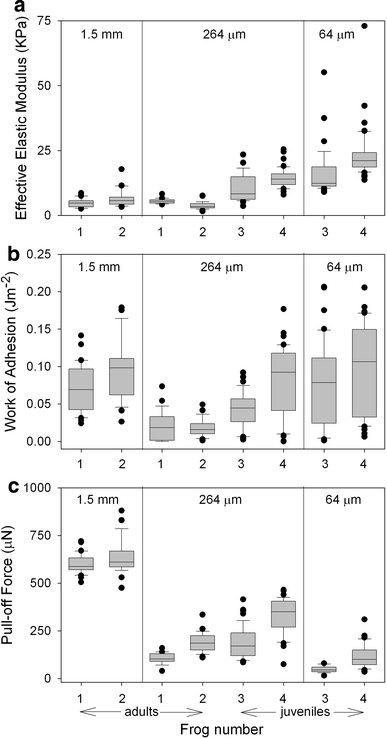Fig. 6.

Effects of indenter diameter (1.5 mm, 264 and 64 μm) and frog age (frogs 1 and 2 were mature adults while frogs 3 and 4 were immature) on effective elastic modulus (E eff) (a), work of adhesion (b) and pull-off force (c). The box plots show median value (line), 25 and 75% percentiles (shaded area), 10 and 90% percentiles (error bars) and outliers (filled circles). Comparisons were made after combining data from similar sized frogs. The larger (adult) frogs had a lower E eff, a lower work of adhesion and a lower pull-off force than the smaller (immature) frogs with the 264 μm-diameter indenter. For the large frogs, decreasing the indenter diameter from 1.5 mm to 264 μm resulted in a small decrease in E eff, a decrease in the work of adhesion and a large decrease in the pull-off force. For the small frogs, decreasing the indenter diameter from 264 to 64-μm diameter resulted in an increase in E eff, a small increase in the work of adhesion and a drop in the pull-off force. Because of the small sample size (two frogs of each age group), statistical tests cannot be used to test the significance of these differences
